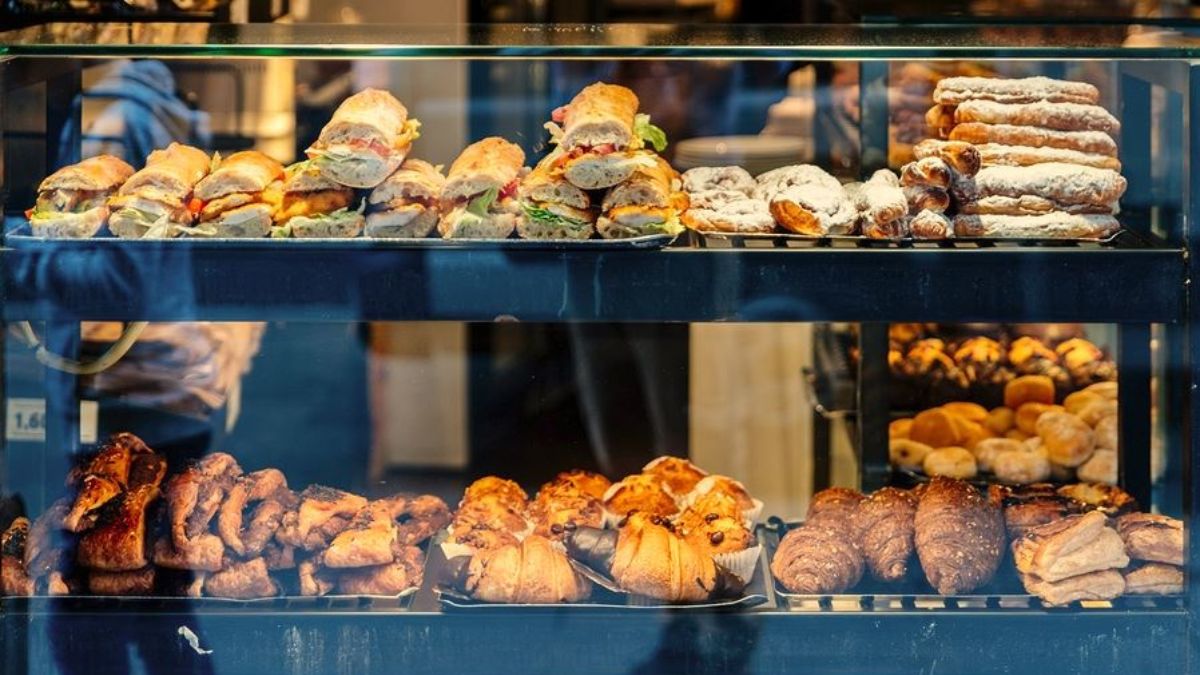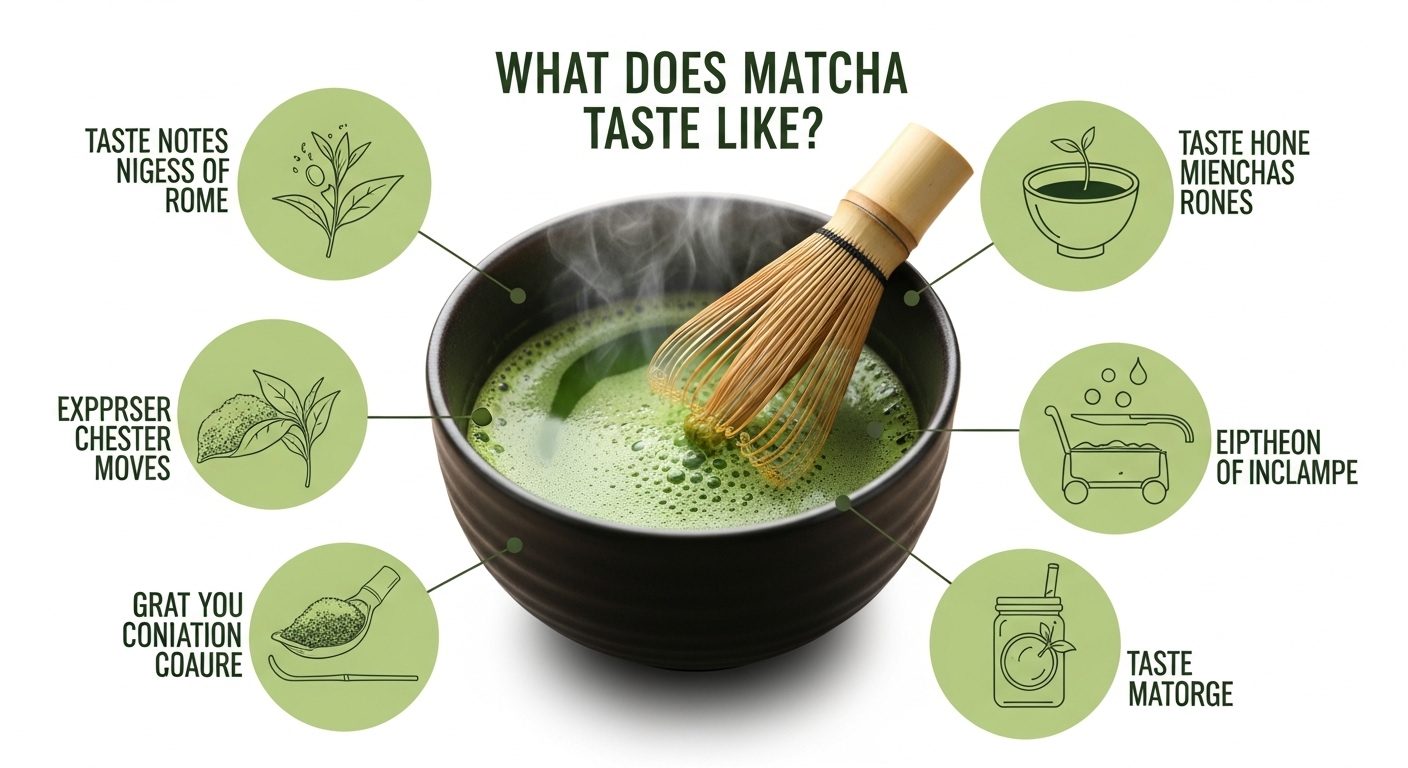FOOD
Tips for Running a Successful Sandwich Shop

Opening a sandwich shop can be a rewarding venture for those with a passion for crafting delicious and unique food experiences. From selecting the perfect bread to sourcing the freshest ingredients, the devil is in the details when it comes to sandwich-making. To stand out in a competitive market, it’s essential to nail down your shop’s operations, marketing, and menu offerings. Whether you’re a seasoned restaurateur or a new entrepreneur, these tips will help ensure your sandwich shop is the talk of the town. Keep reading to discover insights and strategies that can elevate your business to the next level.
Implementing Efficient Service Models to Keep Customers Satisfied

Your service model is the backbone of your sandwich shop’s operations. Efficiency is key in ensuring a smooth experience for customers, especially during peak hours. Quick service, without sacrificing quality, can make a significant difference in retaining customers and garnering positive reviews.
Incorporating technology, such as an earned wage access app for employees or a point-of-sale system, can streamline both front-end and back-end operations. From speeding up the checkout process to managing employee wage access, technology can ensure your team is as efficient and effective as possible. Wage access apps, for example, provide employees with more financial freedom. This fuels their satisfaction which directly affects their productivity.
A well-designed kitchen layout with stainless steel restaurant equipment, like a sandwich prep table, can dramatically improve the speed and quality of service. Ensuring employees have everything they need within reach minimizes downtime and keeps the line moving quickly.
Customer feedback is invaluable for refining your service model. Regularly solicit and review customer opinions to identify bottlenecks or areas where customers feel service can be enhanced. Addressing these issues promptly can improve the overall dining experience and encourage repeat business.
Crafting a Unique Selling Proposition for Your Sandwich Shop

In the saturated world of food service, your sandwich shop needs a unique selling proposition (USP) to cut through the noise. The USP should highlight what sets your sandwiches apart, whether it’s a secret sauce, locally sourced ingredients, or creative flavor combinations. It must resonate with your target audience and make them choose you over the competition.
Your USP should be reflected in every aspect of your business, from the decor to the customer service. If sustainability is a cornerstone of your brand, showcase this commitment through environmentally friendly practices and materials in your shop. It’s all about creating a consistent brand experience that customers will remember and appreciate.
Mastering the Art of Inventory Management for Fresh Ingredients
Freshness is paramount in the sandwich business, and managing your inventory effectively is essential to ensuring every sandwich served is up to standards. Overstocking can lead to wastage, while understocking can result in disappointed customers and lost sales. It’s a balancing act that requires careful planning and regular review.
Implementing an efficient inventory management system can save both time and money. Modern software can forecast demand based on historical data, automate purchasing, and help track food costs. Keeping a close eye on your inventory turnover will also help to determine which ingredients are not being used efficiently.
Engaging with the Community to Build Brand Loyalty
For any local business, community engagement is a powerful tool for building loyalty and word-of-mouth referrals. Your sandwich shop can become a staple in the neighborhood by cultivating relationships with locals, participating in community events, and supporting area causes or initiatives.
Hosting events at your shop or sponsoring local sports teams or arts programs can endear your business to the community. This kind of involvement not only garners goodwill but can also increase your visibility among potential customers who value local businesses that contribute to the community’s well-being.
Consider partnering with local farms or producers for your ingredients, which can reinforce a community-centric image and guarantee freshness. Telling these local partnership stories can draw in residents who are passionate about supporting small businesses and local agriculture.
Cultivating a strong online presence is also important for community engagement. Actively responding to customer feedback on review platforms and social media can demonstrate your commitment to customer satisfaction and personalize the customer experience.
Overall, managing a successful sandwich shop requires a combination of passion and precision. It’s about crafting a unique brand, managing resources wisely, engaging with your community, leveraging social media effectively, and delivering efficient service. By focusing on these key areas, you can ensure your sandwich shop not only survives but thrives in a competitive market.

FOOD
Kamikaze Drink: A Cocktail That Blends Bold Simplicity with Lasting Influence

In today’s fast-paced world, cocktails are no longer defined solely by complexity or elaborate presentation. The most memorable drinks are those that merge simplicity with character, delivering not just refreshment but also a sense of culture and identity. One such enduring classic is the kamikaze drink, a cocktail that has stood the test of time as both a party staple and a symbol of bold, straightforward mixology.
This article explores the history of the kamikaze drink, its cultural significance, its evolving role in modern cocktail culture, and why it represents a new generation of beverages that balance tradition with reinvention.
What Is the Kamikaze Drink?
The kamikaze drink is a cocktail made with three simple ingredients: vodka, triple sec, and lime juice. Served chilled in a shot glass or occasionally as a martini-style cocktail, it delivers a sharp citrus punch with a clean, crisp finish.
Its name—meaning “divine wind” in Japanese—suggests intensity, but in the context of the drink, it embodies the cocktail’s direct, no-frills approach: bold flavor, instant impact, and universal appeal.
A History Rooted in Simplicity
The origins of the kamikaze drink are often traced back to American naval bases in Japan following World War II. It was believed to have emerged in the late 1940s or 1950s, a period when vodka was gaining international popularity. The drink’s minimalist formula reflects the post-war era’s practical approach to cocktails: easy to make, easy to enjoy, and unpretentious.
From its beginnings in Japan, the kamikaze spread quickly to bars across the United States, eventually becoming a staple of 1970s and 1980s nightlife. Its popularity was fueled by the rise of vodka as a versatile spirit and the growing trend of shots as a social ritual.
A Philosophy of Direct Impact
At the heart of the kamikaze drink’s enduring appeal is its philosophy of directness. Unlike layered cocktails that rely on intricate garnishes or multiple infusions, the kamikaze stands out because of its clarity:
-
Three ingredients, no extras: A balance of vodka, citrus, and orange liqueur.
-
Uncomplicated preparation: Easy to shake and serve, making it accessible to bartenders and party hosts alike.
-
Instant character: A strong yet refreshing flavor profile that requires no explanation.
This simplicity is part of its genius. It reflects a growing recognition in cocktail culture that less can indeed be more.
Bridging Tradition with Modern Trends
What makes the kamikaze drink particularly noteworthy is its ability to bridge traditional cocktail-making with contemporary tastes. Its structure has inspired countless variations, from fruit-flavored twists to frozen versions for summer gatherings.
Examples of its adaptability include:
-
Flavored Kamikaze: Adding cranberry juice, melon liqueur, or blue curaçao for visual and flavor appeal.
-
Frozen Kamikaze: Blended with ice to create a refreshing, slushy texture.
-
Upscale Versions: Using craft vodkas, fresh-squeezed lime, and artisanal triple secs to appeal to cocktail connoisseurs.
By evolving with consumer preferences, the kamikaze demonstrates how a classic can stay relevant across generations.
Influence in the Social Scene
The kamikaze drink’s impact extends beyond its ingredients—it has shaped the way people socialize with cocktails. In the 1980s, it was a symbol of nightlife energy, often ordered in rounds at bars or shared as a group ritual. Today, it still holds cultural weight as a “starter shot,” introducing newcomers to vodka cocktails in a fun, approachable way.
Its role in the social scene underscores three broader trends:
-
Accessibility: A drink anyone can make or order without intimidation.
-
Shared experience: Commonly consumed in groups, enhancing camaraderie.
-
Timeless recognition: A name and flavor that remain familiar across decades.
A Model for Modern Mixology
The kamikaze drink’s rise reflects broader shifts in mixology and consumer behavior. Younger drinkers and seasoned enthusiasts alike appreciate cocktails that embody:
-
Authenticity: Drinks that stay true to their roots while leaving room for creativity.
-
Efficiency: Simple recipes that deliver quality without excess.
-
Versatility: A base structure that can be modified for diverse preferences.
In this way, the kamikaze has become a model for how classic cocktails can thrive in an age of experimentation while maintaining their original spirit.
Challenges and Opportunities
Like any cultural icon, the kamikaze drink faces challenges in today’s crowded cocktail landscape:
-
Competition: Craft cocktails with elaborate presentations often overshadow simpler drinks.
-
Perception: Some view it as an “old-school” shot rather than a modern classic.
-
Health consciousness: Growing demand for lower-alcohol or sugar-free drinks challenges its traditional formula.
Yet these hurdles also open doors for innovation. Bartenders are reimagining the kamikaze with natural ingredients, organic vodkas, and creative presentations, ensuring it continues to appeal to new generations.
Digital Influence and Reinvention
In the digital age, the kamikaze drink is enjoying a resurgence. Online platforms like TikTok and Instagram have introduced it to younger audiences, who celebrate its colorful variations and quick preparation. Tutorials, recipe videos, and creative twists on the classic have given it a new life as both a nostalgic throwback and a trendy choice.
This digital influence allows the kamikaze to:
-
Reach global audiences who may not have encountered it before.
-
Inspire home mixologists seeking simple yet impressive cocktails.
-
Reclaim its status as a versatile staple in the modern bar scene.
Looking Ahead
As cocktail culture continues to evolve, the kamikaze drink remains a strong contender for lasting relevance. Its adaptability, cultural history, and bold simplicity ensure that it will always have a place in both casual gatherings and professional bar menus.
Potential growth areas include:
-
Premium reinventions: Incorporating craft ingredients and artisanal spirits.
-
Health-conscious adaptations: Exploring low-alcohol or sugar-free versions.
-
Global fusion: Integrating flavors from diverse cultures to create new kamikaze-inspired drinks.
In doing so, the kamikaze continues to embody the balance of tradition and modernity that defines successful cocktails.
Final Thoughts
The story of the kamikaze drink is one of endurance, reinvention, and cultural influence. From its origins in post-war Japan to its role in 1980s nightlife and its current digital revival, it has proven that true classics don’t fade—they adapt.
By uniting bold flavor with straightforward preparation, the kamikaze has secured its place as a cocktail that speaks to both past and future. In a world where consumers crave authenticity, efficiency, and shared experiences, the kamikaze drink serves as both a nostalgic reminder and a modern-day essential.
As cocktail culture continues to evolve, one thing remains clear: the kamikaze’s legacy is not just about the drink itself, but about the connections it creates, the simplicity it celebrates, and the bold spirit it represents.
FOOD
Yogurt Drink: A Blend of Tradition, Wellness, and Modern Innovation

In today’s fast-evolving world of food and wellness, success is no longer measured solely by bold flavors or mass production. The most influential beverages are those that combine taste with nutrition, convenience with tradition, and global appeal with cultural authenticity. One such product making waves across both traditional and modern markets is the yogurt drink—a timeless refreshment with roots in ancient cultures that is now redefining wellness beverages worldwide.
This article explores the journey of yogurt drinks, their nutritional significance, their growing role in health-conscious lifestyles, and why they represent the new generation of functional beverages shaping consumer expectations.
What Is a Yogurt Drink?
At its core, a yogurt drink is a dairy-based beverage made by fermenting milk with beneficial bacteria and then thinning it with water, fruit juice, or flavorings. Known for its creamy texture and tangy flavor, the drink has long been celebrated for its probiotic qualities and digestive benefits.
While variations of yogurt drinks exist across cultures—such as lassi in India, ayran in Turkey, doogh in Iran, and modern fruit-flavored yogurt beverages in Western markets—the underlying philosophy is the same: combining nourishment with refreshment.
A Tradition Rooted in Wellness
Yogurt drinks have deep cultural roots, tracing back thousands of years to regions of the Middle East, South Asia, and Central Asia. Historically, they were prized not only for their cooling properties in hot climates but also for their health benefits. Fermented dairy offered a way to preserve milk while enriching it with beneficial bacteria that supported gut health.
This enduring tradition highlights three key pillars of yogurt drink philosophy:
-
Natural wellness: Probiotics and fermentation provide digestive support.
-
Sustainability: Transforming milk into yogurt reduces spoilage and waste.
-
Community and culture: Often shared at meals, yogurt drinks are a social connector across generations.
Bridging Taste with Health
What makes yogurt drinks especially compelling in today’s marketplace is their ability to bridge indulgence with wellness. Unlike sugary sodas or artificial sports drinks, yogurt beverages naturally combine flavor, protein, and probiotics in a single serving.
Examples of this balance include:
-
Digestive health: Probiotic strains support gut microbiome balance.
-
Satiety and nutrition: Protein-rich content helps curb hunger while delivering essential nutrients.
-
Versatility: From sweet mango lassis to savory salted ayran, yogurt drinks adapt to diverse palates.
By addressing both taste and functionality, yogurt drinks represent a new era of beverages that don’t force consumers to choose between enjoyment and health.
Influence in the Modern Wellness Market
As health and wellness trends dominate consumer behavior, the yogurt drink has emerged as a frontrunner in the functional beverage category. Its popularity is amplified by its alignment with key values that modern consumers prioritize:
-
Transparency: Ingredients are simple, recognizable, and natural.
-
Authenticity: Many yogurt drinks carry cultural heritage, making them feel genuine.
-
Functionality: Probiotics and protein give yogurt beverages an edge over empty-calorie options.
Social media has also fueled their resurgence. Vibrant fruit-topped lassis, frothy ayran in traditional cups, or trendy bottled probiotic drinks now dominate Instagram feeds and TikTok videos, connecting ancient traditions with modern digital storytelling.
A Model for the Future of Functional Beverages
The rise of yogurt drinks reflects broader shifts in beverage consumption, particularly among younger generations. Millennials and Gen Z are increasingly drawn to products that embody:
-
Authenticity: They want drinks with a story—whether rooted in heritage or crafted for wellness.
-
Diversity: Yogurt drinks appeal globally because they adapt to both sweet and savory preferences.
-
Innovation: From dairy-free probiotic yogurts to kombucha-yogurt hybrids, the category thrives on creativity.
By bridging these expectations, yogurt drinks have established themselves not only as a staple of traditional diets but also as pioneers of modern beverage innovation.
Challenges and Opportunities
Despite their popularity, yogurt drinks face challenges in scaling globally:
-
Shelf Life: Maintaining probiotic activity while ensuring freshness can be difficult.
-
Taste Education: Some consumers unfamiliar with tangy flavors may need time to embrace them.
-
Competition: The functional beverage space is crowded with kombucha, kefir, and plant-based alternatives.
Yet these challenges are also opportunities. With growing demand for gut health solutions and plant-based dairy options, yogurt drinks can expand through innovation—such as lactose-free formulas, vegan probiotic blends, or convenient single-serve packaging that fits modern lifestyles.
Community, Culture, and Connection
One of the most distinctive aspects of yogurt drinks is the sense of community they create. In many cultures, sharing a yogurt beverage is a gesture of hospitality, nourishment, and care. From family meals in South Asia to street vendors in the Middle East, yogurt drinks are intertwined with rituals of togetherness.
Even in modern cafes, smoothie bars, and grocery aisles, the communal element persists. Whether enjoyed at a family dinner or ordered as a trendy probiotic smoothie, yogurt drinks serve as a bridge between tradition and modernity, between personal wellness and shared culture.
Looking Ahead
The trajectory of yogurt drinks suggests a promising future where they continue to expand beyond cultural boundaries and into mainstream wellness routines. As consumers demand beverages that are both healthy and authentic, yogurt drinks are uniquely positioned to lead.
Potential avenues for growth include:
-
Global Fusion: Incorporating exotic fruits, spices, and cross-cultural flavors into yogurt beverages.
-
Sustainable Practices: Using eco-friendly packaging and responsibly sourced dairy or plant-based alternatives.
-
Expanded Accessibility: Bringing yogurt drinks to new markets through ready-to-drink innovations and fortified functional blends.
In this way, the yogurt drink is not just a passing trend but a long-term player in the global movement toward healthier, more authentic lifestyles.
Final Thoughts
The story of the yogurt drink is one of resilience, adaptability, and timeless appeal. From its origins in ancient traditions to its current role in the wellness-driven beverage market, it has continually evolved while staying true to its core values of nourishment and community.
In an era where consumers seek both function and authenticity, yogurt drinks prove that true success lies in harmonizing health with enjoyment, culture with innovation, and tradition with modern needs. Whether enjoyed as a lassi on a hot summer day, a frothy ayran with a hearty meal, or a sleek bottled probiotic beverage, the yogurt drink remains a symbol of connection, vitality, and balance.
As the world increasingly demands beverages that enrich both body and soul, yogurt drinks stand ready to set the standard for the future of functional refreshment.
FOOD
What Does Matcha Taste Like? A Complete Guide

Matcha has become a global sensation, appearing everywhere from traditional tea ceremonies to lattes and desserts. Yet many people still ask the same question: what does matcha taste like? If you’re curious about this vibrant green tea powder, its unique flavor profile, and how it varies based on quality and preparation, this guide will give you everything you need to know.
Understanding Matcha: More Than Just Green Tea
Matcha is a finely ground powder made from shade-grown green tea leaves. Because you consume the whole leaf rather than just an infusion, the flavor of matcha is far more concentrated than standard green tea. This creates a distinctive taste experience that can range from grassy and vegetal to sweet and creamy, depending on how it’s produced and prepared.
The Core Flavor Profile: Earthy, Umami, and Smooth
The simplest answer to what does matcha taste like is this: it’s a mix of vegetal sweetness, earthy richness, and a subtle hint of bitterness. But there’s more nuance:
-
Umami: High-quality matcha delivers a strong umami flavor—savory, rich, and satisfying. This comes from the amino acid L-theanine, which develops during shade-growing.
-
Sweetness: Premium ceremonial-grade matcha has a natural sweetness with no sugar added. This sweetness balances the earthiness and keeps bitterness low.
-
Grassy Notes: Matcha’s “green” taste comes from chlorophyll and catechins in the tea leaves.
-
Bitterness (Astringency): Lower-quality matcha or over-whisking with hot water can increase bitterness.
Understanding these core elements helps you appreciate why matcha can taste so different from one cup to the next.
How Quality Affects the Taste of Matcha
Not all matcha powders are created equal. The taste you experience depends heavily on whether you’re drinking ceremonial-grade or culinary-grade matcha.
-
Ceremonial Grade: Designed for traditional tea ceremonies, this type uses the youngest, most tender tea leaves. The result is a vibrant green color, creamy texture, and naturally sweet flavor with little bitterness.
-
Culinary Grade: Often used in lattes, smoothies, or baking. It’s more robust and slightly more bitter, which helps its flavor stand up to milk, sugar, or other ingredients.
-
Color Indicator: Bright green equals fresher, sweeter matcha. Dull olive or brownish tones usually signal older or lower-quality leaves, which taste more bitter.
When buying matcha, always check origin, grade, and color to predict how it will taste.
Preparation Methods Shape the Flavor
How you prepare matcha influences the taste just as much as the quality of the powder itself.
-
Water Temperature: Using water that’s too hot (above ~175°F/80°C) can scorch matcha, making it taste overly bitter.
-
Whisking Technique: Properly whisking with a bamboo whisk creates a frothy layer that softens the flavor and texture.
-
Serving Style: Traditional matcha (usucha) is lighter and thinner, highlighting sweetness. A thicker preparation (koicha) intensifies the umami and reduces bitterness.
Small changes in preparation can dramatically improve your experience of matcha’s flavor.
Matcha Taste in Lattes, Desserts, and Smoothies
Another way to answer what does matcha taste like is by looking at how it pairs with other ingredients.
-
Matcha Lattes: Adding milk creates a creamy, mellow flavor that balances bitterness while enhancing sweetness.
-
Desserts: Matcha’s earthy notes pair beautifully with sugar, white chocolate, and cream in desserts like ice cream, macarons, and cakes.
-
Smoothies: Blending matcha with fruits like banana or mango softens its grassy flavor and adds natural sweetness.
These combinations are popular because they highlight matcha’s versatility while making it more approachable for beginners.
Why Matcha Tastes Different from Regular Green Tea
Though both come from the Camellia sinensis plant, matcha and regular green tea have very different taste profiles. Regular green tea is steeped and discarded, leaving you with a lighter, sometimes more bitter drink. Matcha, by contrast, involves consuming the entire leaf in powdered form, resulting in a richer, creamier texture and more concentrated flavor.
Additionally, the shading process used for matcha increases chlorophyll and amino acids, creating its signature umami and sweet notes.
Common Descriptions People Use for Matcha’s Flavor
If you browse online reviews or talk to matcha enthusiasts, you’ll see a wide range of descriptions. Some common terms include:
-
Grassy
-
Creamy
-
Savory
-
Oceanic or seaweed-like
-
Sweet
-
Nutty (especially in lattes or baked goods)
Each person’s palate is different, but these descriptors consistently appear in discussions about what matcha tastes like.
Tips for Developing Your Palate
If you’re trying matcha for the first time, here are a few tips to help you appreciate its flavor:
-
Start with Ceremonial-Grade Matcha: It’s sweeter and less bitter, perfect for newcomers.
-
Use the Right Water Temperature: Stick to around 175°F/80°C to protect delicate flavors.
-
Whisk Until Frothy: This helps distribute the powder evenly and improves texture.
-
Taste It Plain First: Before adding milk or sweeteners, try matcha traditionally to understand its authentic flavor.
-
Experiment with Pairings: Once you know the base flavor, try lattes, smoothies, or desserts.
Looking Ahead: Matcha’s Expanding Flavor Profile
Matcha’s popularity isn’t slowing down. As more people discover its unique taste and health benefits, producers are experimenting with different cultivars, growing regions, and preparation methods. This innovation is expanding the flavor spectrum of matcha, making it even more exciting for tea lovers and food enthusiasts.
We can expect to see new blends, flavor pairings, and creative uses in everything from savory dishes to craft cocktails. For anyone who has wondered what does matcha taste like, the future promises even more variety and depth.
Conclusion
So, what does matcha taste like? At its best, it’s a vibrant balance of earthy umami, natural sweetness, and creamy smoothness with a hint of grassy freshness. Quality, preparation, and pairing all shape your experience. Whether you enjoy it in its traditional form or mixed into lattes and desserts, matcha offers a unique flavor profile unlike any other tea.
With this understanding, you can choose the right matcha for your tastes and experiment with ways to enjoy it. From its ceremonial roots to its modern culinary uses, matcha is much more than a trendy ingredient—it’s a flavor experience waiting to be explored.
-

 HEALTH1 year ago
HEALTH1 year agoIntegrating Semaglutide into Your Weight Loss Plan: A Practical Guide
-

 HOME IMPROVEMENT1 year ago
HOME IMPROVEMENT1 year agoHow to Choose the Perfect Neutral Area Rug for Every Room
-

 LAW1 year ago
LAW1 year agoTeenage Drivers and Car Accidents in California: Risks and Parental Liability
-

 LAW1 year ago
LAW1 year agoPost-Divorce Considerations in California: Modifications and Long-Term Planning
-

 CONSTRUCTION1 year ago
CONSTRUCTION1 year agoConstruction Site Safety Regulations in New York and Your Rights as a Worker
-

 HOME1 year ago
HOME1 year agoSandra Orlow: The Teen Model Who Captivated the Internet
-

 FINANCE1 year ago
FINANCE1 year agoDigital Asset Management in Florida Estate Planning
-

 LAW1 year ago
LAW1 year agoKentucky’s School Football: Concussions, Injuries, and Legal Options